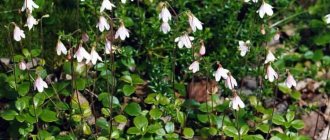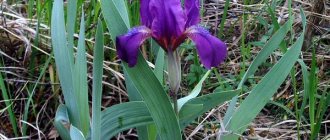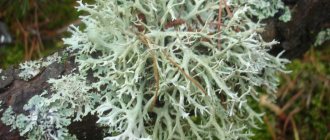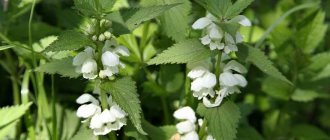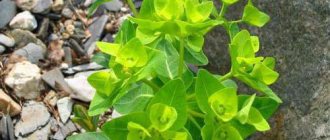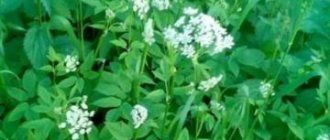Honey locust three-spined is an original decorative deciduous tree with fragrant flowers, covered with three-branched sharp spines. Sometimes the plant is called American acacia, since the tree is native to North America. However, honey locust has no relation to the Acacia genus. Popular for urban landscaping and hedges, honey locust wood is dense and durable with a beautiful texture.
Description of the species
Common or three-thorned honey locust (Gleditsia triacanthos) is a species of tree of the genus Honey locust, legume family. The plant reaches 35–40 m in height and 70–80 cm in diameter. The crown of the tree is openwork, pyramidal, spreading. Gleditsia triacanthos grows quickly, the greatest growth at the age of 5–7 years is 70 cm. The dark brown trunk and shoots are covered with large spines up to 15 cm long. The bark is thin and wrinkled. The root system is branched, strong, and penetrates deep into the soil.
The leaves of Gleditsia triacanthos are glossy, light green in summer and yellow in autumn, pinnate or double pinnate. They consist of 20–25 small oblong leaves, arranged in pairs along the main stem. The flowers of honey locust are white-green with a pleasant aroma, inconspicuous and small, collected in inflorescences. It blooms from 10 years old, annually from May to July. Fruits in late October. The red-brown pods are 20–40 cm long, curved and twisted, and remain on the tree until mid-winter. Three-spined honey locust pods with juicy sweet pulp. The seeds are elongated, brown, up to 15 mm in length.
The species is unpretentious, resistant to drought and winds, but is not frost-resistant - it can only withstand temperatures down to –23 °C. The lifespan of honey locust is about 200 years.
Description of the plant
The plant received its name thanks to the German biologist and excellent doctor who practiced in the middle of the 18th century - Johann Gleditsch. Deciduous plants have taken root in Africa, Asia and America; there are about 15 subspecies. The height of the plant reaches 40 m. The bark is colored gray or black. Over time, the trunk becomes covered with cracks. Leaves with branches contribute to the formation of a fancy crown. By autumn, the foliage changes color from green to bright yellow. A characteristic feature of the species is the presence of modified shoots that resemble thorns.
Flowering is not considered a curiosity and is no different. In the axils of the foliage, small yellow, white or green flowers appear in the form of panicles or tassels. They have a pleasant aroma sufficient to attract bees. Gledicia is considered an excellent honey plant. After pollination by bees, you can observe the ovary of fruits, which are curved beans. The length of the fruit reaches 0.5 m. The seeds do not tend to leave the peel and may not open until winter. With the help of honey locust, city parks, squares and recreation areas acquire the necessary decorative qualities. Used as a hedge.
Varieties used
| Skyline | The height of the plant is 15 m. Young foliage has a brown-red color, which turns green by summer. |
| Shademaster | The tree is tall and has a spreading crown. The foliage has a yellowish color, which becomes golden in autumn, and lacy edges. Helps disperse sunlight, preventing small shrubs, grass and flowers from burning. Characterized by the presence of red pods, thorns and inflorescences that attract bees. The variety belongs to the honey-bearing category. |
| Rubylace | The height of the tree is 10 m. A characteristic feature is the presence of shiny green foliage, which turns from red-brown and green-brown, depending on the season. |
| Sunburst | The young foliage of the species has a yellowish color, which over time turns into a rich green. With the onset of autumn, the leaves turn brown. There is no fruiting, as well as thorns on the plant. The height will be 10 m. |
Spreading
In its natural environment, honey locust grows in the forests of eastern North America. In countries with temperate climates, the crop has been grown since the 18th century, in Russia - since the beginning of the 19th century. Gleditsia triacanthos is widespread in Ukraine and in southern Russian regions: in the Rostov and Volgograd regions, in the Krasnodar Territory, in the Crimea and in the North Caucasus. Despite the heat-loving nature, with the help of selection, some varieties are adapted to the climate of the middle zone, the Far East and the North-West, and in Siberia they are cultivated in botanical gardens.
Growing and Reproduction
Despite the fact that the three-spined honey locust belongs to the southern trees, it can be grown in areas with cold winters, you just need to wrap the young seedlings well. With each subsequent year, the tree will undergo acclimatization, and its frost resistance will gradually increase. As already mentioned, you can grow a tree from root shoots and shoots, but the strongest and hardiest plant will be a plant from a seed. For sowing, beans must be harvested in the fall; sowing is carried out in the spring. To ensure germination, seeds can be soaked in warm water for several hours before sowing and winnowed, but not dried. Gleditsia is transplanted to a permanent place of residence after a year or two.
Planting and care
Three-spined honey locust is unpretentious and is able to live in environmentally polluted areas and tolerates increased dust and air pollution. The species is resistant to winds and droughts, grows on saline soils, and easily tolerates replanting. For planting, choose a sunny, flat place; for the first 2 years, young seedlings are shaded. Seedlings 2–3 years old are preferred.
It is possible to grow honey locust on calcareous and sandy soils, but acidic and waterlogged soil is undesirable. Seedlings can be purchased from a nursery, making sure that the tree is not damaged or infested with parasites. It should be transported carefully - the shoots of the tree are brittle and easily damaged, which subsequently leads to pain in the plant.
Three-thorned honey locust is planted in spring or early autumn. The seedlings must have time to take root in the new place before the first frost. Gleditsia triacanthos is not winter hardy. It tolerates only short-term drops in temperature, so shelter is necessary in the cold season. To do this, use spruce branches, dry branches or special non-woven material.
The young tree is replanted with a clod of earth. An important condition is that the soil should not be waterlogged. Planting stages:
- A hole is dug 1.5–2 times larger than the earthen clod.
- To prevent moisture stagnation, add a drainage layer (small pebbles, crushed bricks, crushed stone, gravel)
- The honey locust is placed in a hole and the location of the trunk is recorded.
- The species is not picky about soil and fertilizers, so the resulting voids are filled with ordinary garden soil, watered and compacted.
- Three-spined honey locust is placed so that the root collar is at ground level.
- Water, compact the soil, gently loosen without damaging the roots, and mulch with a thick layer of straw, chopped bark or compost.
Further care is simple and consists of fertilizing with liquid mineral fertilizers once a year and removing weeds while the tree is growing. During periods of lack of precipitation, young plants require regular irrigation 1–2 times a month; adult honey locusts do not need watering.
Three-spined honey locust lends itself well to pruning; during decorative cultivation, the lower spines are removed and a crown is formed.
Distribution and ecology
It is native to the central eastern half of North America, from western New York and Pennsylvania to southern Minnesota (43°N) and eastern Kansas south to northeastern Texas and northern Georgia [5]. Grows in forests.
At a young age, it can be attacked by hares, but almost does not suffer from insects and is affected only by the acacia false scale insect. Nectria damage causes the branches and young stems of honey locust to dry out. In places where trunks are damaged near the butt, trees become infected with oak daedalia. In old honey locust plantations, foam rot is caused by the sulfur-yellow tinder fungus. A number of fungi attack honey locust in areas of bark burns. However, cases of fungal diseases in honey locust are rare [3].
Reproduction
Gledicia three-spined takes root easily. The species can be propagated both by seeds and vegetatively - by grafting, cuttings and root shoots:
- To prepare cuttings, cut branches with live buds are used. The shoots are rooted in a mixture of sand and soil.
- Shoots appear on plants at 8–10 years of age; replanting is carried out in the spring.
- Seed propagation is an effective way to obtain seedlings. Seeds can be stored in the refrigerator for a long time without losing their germination. They have a dense shell, so before sowing they are wiped with sandpaper. This helps to break the integrity of the shell and facilitates germination. Before planting, soak for 24 hours.
Soil moisture is important during germination. Seeds and cuttings can be planted immediately in open ground or left to grow in containers for 2–3 years.
Directions for use and dosages
The following dosage forms can be prepared based on honey locust:
- tincture;
- fruit decoction;
- herbal multicomponent collection;
- decoction of leaves.
Preparing the tincture
To prepare the tincture, you need to take 100 g of tree roots, grind them in any convenient way and pour 4 glasses of vodka.
To obtain the maximum concentration of beneficial substances, it is recommended to use 70 degrees alcohol. It is from it that tinctures are prepared, which are sold in pharmacies.
During the day, it is necessary to infuse the roots of the plant, gently shaking the contents of the container. Afterwards, it is recommended to heat the roots soaked in alcohol in a water bath for about 2 hours. Be careful not to let the liquid boil.
Honey locust root for tincture
Leave the roots for another day, then heat again without boiling violently. Leave the product for another 3 days, shaking the container regularly. After this, strain the tincture and use as medicine shortly before meals.
Follow the dosage strictly - no more than 1 tablespoon at a time. You can use the product 2-3 times a day.
If you made the tincture with alcohol, it must be diluted twice with water before use. You can add the product directly to a glass of liquid.
If you have gastrointestinal diseases, it is recommended to mix the tincture with non-acidic juice or tea, water and use the medicine 1.5 hours after a light breakfast and dinner.
This will prevent unwanted irritation of the gastric mucosa.
Root tincture
Preparing the decoction
A decoction can be prepared from the fruits of honey locust. You will need 4 pods, which must be mature. They need to be washed and chopped into small pieces, and then pour 200 ml of water and boil the composition for 10 minutes. A little liquid will boil away.
It is necessary to make up for this missing volume by adding a little water.
Infuse the product for 2-3 hours, then filter and take a tablespoon several times a day. It is better to store the decoction on the bottom shelf of the refrigerator or in the basement. This will prevent it from souring . The course of treatment lasts an average of 2 weeks.
Honey locust pods for decoction
Preparation of herbal mixture
Gledicia is suitable for preparing multi-component preparations that have a complex effect on the human body.
You can use chicory roots, tansy, sage, calamus root, plantain and walnut leaves, elecampane roots, and St. John's wort herb.
Select several of these plants and, together with the leaves and fruits of honey locust, make therapeutic and preventive herbal infusions.
Finely chop all ingredients and mix. Pour 100 g of product into a liter of cold water and leave for 5 days.
After this, simmer the mixture over low heat until it boils, then cool and strain.
The decoction can be used as a general restorative preventative, take a teaspoon several times a day. The medicine is first added to the water to reduce the concentration and prevent irritation of the gastric mucosa.
Gleditsia can be added to various herbal preparations
Decoction of leaves
A decoction of honey locust leaves is prepared as follows: pour a tablespoon of the raw material into a glass of boiling water. Afterwards, the product is boiled in a water bath in an enamel container under a closed lid for 20-30 minutes. Then the broth must be cooled, filtered, a little water added to replenish the missing volume and taken several times a day half an hour before meals, a tablespoon at a time.
Diseases and pests
Common honey locust has good immunity; the species is rarely attacked by pests. But constant soil moisture is detrimental to the plant, leading to damage to the roots by pathogenic fungi. Infection of the root system with gray mold (Botrytis cinerea) can lead to rotting and death of the plant. The proliferation of the parasite is facilitated by cold, rainy weather, waterlogging of the soil, lack of air circulation and sudden temperature changes in summer and spring. For prevention, a solution of copper sulfate is used, and for treatment, fungicides are used.
In addition to microorganisms, Gleditsia triacanthos can infect insects: garden bugs and aphids. Insecticides are used for destruction. Aphicides help well against aphids.
Contraindications for use
There are some contraindications to the use of the decoction. This can be explained by the fact that in large therapeutic doses the well-known alkaloid triacanthin is considered a toxic substance. Therefore, the ingestion of medications that contain such an alkaloid can cause severe poisoning of the body. You should immediately stop using the medication if the following symptoms appear:
pale skin;- nausea and vomiting;
- diarrhea;
- dizziness;
- increased salivation;
- fatigue and constant drowsiness.
If the decoction is used uncontrollably , it can lead to rapid destruction of red blood cells, which can result in venous stagnation of the brain and symptoms of pneumonia. If symptoms of severe weakness have arisen after recently taking such a decoction, you should immediately rinse your stomach with a weak solution of potassium permanganate and drink regular activated carbon. If unwanted symptoms appear, you should definitely consult a doctor.
Meaning and Application
Honey locust wood is heavy and durable, can withstand loads well, and is similar in physical and mechanical properties to oak. Suitable for posts, sleepers and lumber, and due to its beautiful texture - for making furniture, parquet and souvenirs. The yellow sapwood is limited to a red-bronze core. The rock does not crack, can be processed and polished, acquiring a smooth surface. The wood is resistant to rotting, which is why it is popular for underground structures.
Honey locust flowers produce nectar, attracting bees. Most varieties are classified as honey plants. Honey has a pleasant taste and aroma, delicate consistency and does not thicken for a long time. The honey productivity of honey locust is 250 kg per hectare.
The fruits are used as cattle feed, and a coffee surrogate is made from the seeds. In folk medicine, the leaves and pods of Gleditsia triacanthos are used as a laxative and antispasmodic. It is important to know that honey locust contains many saponins that can cause poisoning. In severe cases, fainting and liver dysfunction are possible, so when consuming the fruits of the plant, the dosage must be observed.
Use in landscape design
The plant is used for landscaping gardens, parks and streets. Three-spined honey locust forms harmonious combinations with other ornamental trees and shrubs. Indispensable for strengthening the banks of reservoirs and creating protective strips.
Low varieties are used to create impenetrable hedges, providing both external beauty and, thanks to long and sharp needles, reliable protection from penetration into the garden. Popular ornamental varieties of honey locust include the thornless Gleditsia triacanthos Inermis and Gleditsia triacanthos Pendula with drooping branches.
Medicinal properties
Honey locust is a poisonous plant, and the fruits of the tree are considered unsuitable for medicinal use. Nevertheless, the young leaves of this tree are very useful raw materials. From it you can obtain the alkaloid triacanthin (Triacanthinum). There are medicines that contain the hydrochloric acid salt of this alkaloid, obtained in the laboratory. Doctors prescribe them to relieve spasms in various gastrointestinal diseases.
In addition, the alkaloid also relieves spasms in blood vessels and smooth muscles of some organs. The great effectiveness of using triacanthin has been noticed in relieving spasms of the bronchi, stomach and intestines. It also enhances coronary circulation. Triacanthin is similar to papaverine, but differs from it in that it is less toxic.
Therefore, it has become a popular plant in folk medicine. Decoctions are prepared from the ripe fruits of this tree and its leaves, which are a good addition to the treatment of almost all diseases related to the gastrointestinal tract.
Suitable raw materials for the decoction are early leaves, which are collected in the spring, and ripe pods. The main active ingredient contained in them is the alkaloid triacanthin, which has already been mentioned above. But, besides it, the fruits and leaves also contain other useful substances, such as flavonoids and flan compounds - olmelin, fisetin, saponin, etc.

